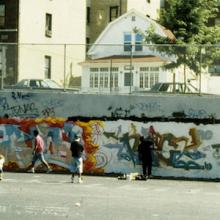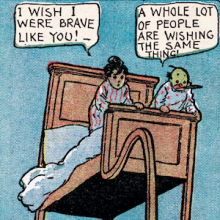Popular Culture
Gorbachev Discusses the Impact of Western Goods in the Eastern Bloc
At a March 10, 1988, Politburo meeting, Mikhail Gorbachev (leader of the Soviet Union) delineated his concerns about the growing influence of Western goods on Eastern bloc countries.

Short Teaching Module: Children and Daguerreotypes (19th c.)
For historians, there are several ongoing debates about the periodization of childhood and its transformation over time. When did children become important and in what capacity? As economic contributors? As the focus of emotional attachment or as subjects prone sentimental idealization?

Short Teaching Module: Graffiti, Gender, and Youth (20th c.)
I use "graffiti art" – the unmediated writings, paintings, and drawings that began to appear in public spaces in New York, Philadelphia, and elsewhere on the east coast during late 1960s – in order to examine the: status of young people as valid historical actors and "citizens" relative to adults

Short Teaching Module: Winsor McCay's Little Nemo in Slumberland
A young, tousled-haired boy about the age of seven is slumbering away in his bed, ensconced in a non-descript, middle class bedroom (fig. 1). He is jarred awake by the revelation that his bed is levitating, and slowly floating out his window and into space.
Polish Government reports on domestic unrest
Pessimism prevailed in this report prepared by the Polish Council of State assessing the general welfare of the country seven years after the national strikes that led to the Gdansk Agreements and four years after the lifting of martial law.
Gorbachev discusses De-Militarization
In the midst of a chaotic year of economic and political reforms, Communist Party General Secretary (and head of state) Mikhail Gorbachev addressed the politburo on the delicate issue of the Soviet military presence throughout Europe.
Conversations between the Catholic Church and the Polish Government
Poland was unique among Warsaw Pact countries in the degree of influence retained by the Catholic Church. But the church was also viewed as a powerful competitor to the state, and its leaders were among the first to be monitored and harassed during periods of social unrest.
Soviet Plan to respond to the Political Crises in the Soviet Republics
As Gorbachev’s reforms began to take hold across the Soviet Union, various Soviet Republics became hotbeds of nationalist, anti-Soviet movements The Georgian SSR was one of the centers of such acitivties with protests in Georgia reaching their peak on April 4, 1989, when tens of thousands of Geor
Lech Walesa's Plans for the Roundtable Talks
In September 1988, Lech Walesa, leader of Poland's Solidarity Movement and later president of Poland following the collapse of communism (1990-1995), wrote this document a few months prior to the historic Roundtable Talks between party and state officials and the opposition that eventually took p
Short Teaching Module: Letter by the Bratislava Five
This teaching module addresses a protest in Bratislava during the summer of 1989 aimed at commemorating the anniversary of the Warsaw Pact invasion by publicly laying flowers at various locations in Slovakia where citizens had been killed in 1968.